Abarth 500 595 695 vs Toyota Mirai – Which model is better for everyday use?
Compare performance, boot capacity, efficiency and price at a glance.
Find out which car is the better choice for you – Abarth 500 595 695 or Toyota Mirai?
Costs and Efficiency:
Looking at overall running costs, both models reveal some interesting differences in everyday economy.
Abarth 500 595 695 has a decisively advantage in terms of price – it starts at 32600 £, while the Toyota Mirai costs 58700 £. That’s a price difference of around 26143 £.
As for range, the Toyota Mirai performs significantly better – achieving up to 650 km, about 385 km more than the Abarth 500 595 695.
Engine and Performance:
Under the bonnet, it becomes clear which model is tuned for sportiness and which one takes the lead when you hit the accelerator.
When it comes to engine power, the Toyota Mirai has a somewhat edge – offering 182 HP compared to 155 HP. That’s roughly 27 HP more horsepower.
In acceleration from 0 to 100 km/h, the Abarth 500 595 695 is distinct quicker – completing the sprint in 7 s, while the Toyota Mirai takes 9.20 s. That’s about 2.20 s faster.
In terms of top speed, the Toyota Mirai performs a bit better – reaching 175 km/h, while the Abarth 500 595 695 tops out at 155 km/h. The difference is around 20 km/h.
There’s also a difference in torque: Toyota Mirai pulls clearly perceptible stronger with 300 Nm compared to 235 Nm. That’s about 65 Nm difference.
Space and Everyday Use:
Cabin size, boot volume and payload all play a role in everyday practicality. Here, comfort and flexibility make the difference.
Seats: Toyota Mirai offers somewhat more seating capacity – 5 vs 4.
In curb weight, Abarth 500 595 695 is evident lighter – 1410 kg compared to 1900 kg. The difference is around 490 kg.
In terms of boot space, the Toyota Mirai offers evident more room – 300 L compared to 185 L. That’s a difference of about 115 L.
When it comes to payload, Toyota Mirai distinct takes the win – 515 kg compared to 385 kg. That’s a difference of about 130 kg.
Who comes out on top?
Overall, the Toyota Mirai shows itself to be leads convincingly overall and secures the title of DriveDuel Champion.
It convinces with the more balanced overall package and proves to be the more versatile choice for everyday use.
 @ Toyota Motor Corporation
@ Toyota Motor Corporation
Toyota Mirai
Abarth 500 595 695
The Abarth 500, particularly in its 595 and 695 renditions, captures the spirit of Italian motoring with its compact yet aggressive design. Known for its lively performance and distinctive styling, this little powerhouse is a joy to drive, offering an engaging experience that appeals to enthusiasts. With its rich motorsport heritage, the Abarth 500 embodies the essence of fun and excitement on both the streets and the race track.
details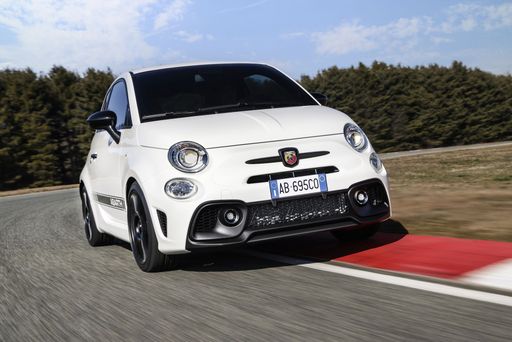 @ Abarth / Stellantis Media
@ Abarth / Stellantis Media
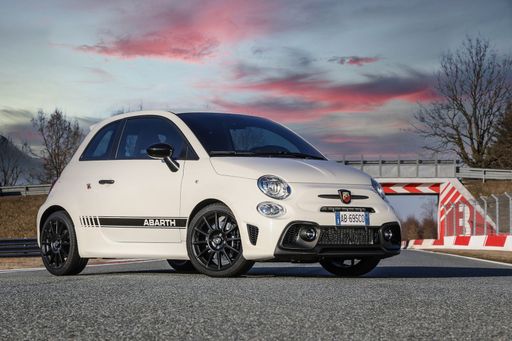 @ Abarth / Stellantis Media
@ Abarth / Stellantis Media
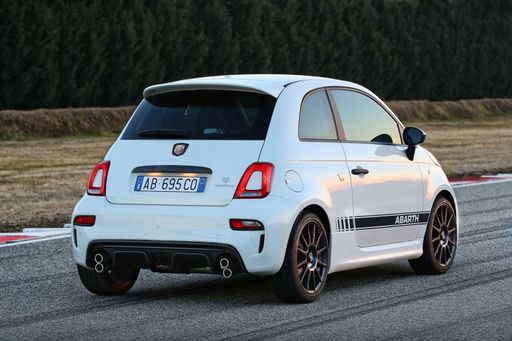 @ Abarth / Stellantis Media
@ Abarth / Stellantis Media
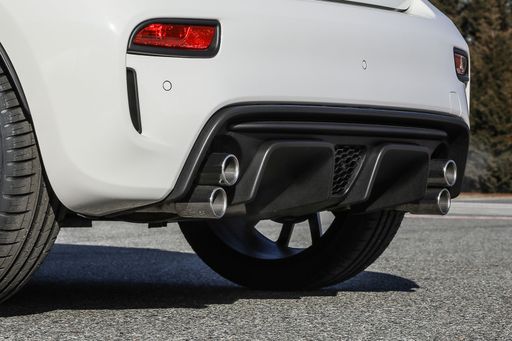 @ Abarth / Stellantis Media
@ Abarth / Stellantis Media
 @ Abarth / Stellantis Media
@ Abarth / Stellantis Media
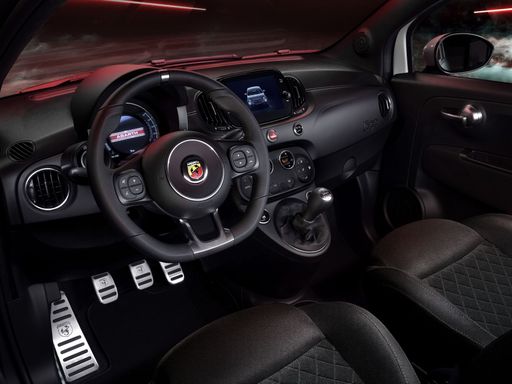 @ Abarth / Stellantis Media
@ Abarth / Stellantis Media
Toyota Mirai
The Toyota Mirai represents a groundbreaking step in hydrogen fuel cell technology, offering an eco-friendly alternative to traditional petrol engines. Its sleek design and futuristic aesthetic make it a standout on the road, while the interior combines comfort with cutting-edge features. With its impressive range and quick refuelling capabilities, the Mirai is paving the way for the future of sustainable motoring.
details @ Toyota Motor Corporation
@ Toyota Motor Corporation
 @ Abarth / Stellantis Media
@ Abarth / Stellantis Media
|
 @ Toyota Motor Corporation
@ Toyota Motor Corporation
|
|
|
|
Costs and Consumption |
|
|---|---|
|
Price
32600 - 39400 £
|
Price
58700 - 66700 £
|
|
Consumption L/100km
-
|
Consumption L/100km
-
|
|
Consumption kWh/100km
17.1 - 18.8 kWh
|
Consumption kWh/100km
-
|
|
Electric Range
242 - 265 km
|
Electric Range
650 km
|
|
Battery Capacity
37.80 kWh
|
Battery Capacity
-
|
|
co2
0 g/km
|
co2
-
|
|
Fuel tank capacity
-
|
Fuel tank capacity
5 L
|
Dimensions and Body |
|
|---|---|
|
Body Type
Hatchback
|
Body Type
Sedan
|
|
Seats
4
|
Seats
5
|
|
Doors
3
|
Doors
4
|
|
Curb weight
1410 - 1435 kg
|
Curb weight
1900 - 1930 kg
|
|
Trunk capacity
185 L
|
Trunk capacity
300 L
|
|
Length
3673 mm
|
Length
4975 mm
|
|
Width
1682 mm
|
Width
1885 mm
|
|
Height
1518 mm
|
Height
1470 mm
|
|
Max trunk capacity
550 L
|
Max trunk capacity
-
|
|
Payload
370 - 385 kg
|
Payload
485 - 515 kg
|
Engine and Performance |
|
|---|---|
|
Engine Type
Electric
|
Engine Type
Hydrogen
|
|
Transmission
Automatic
|
Transmission
Automatic
|
|
Transmission Detail
-
|
Transmission Detail
Reduction Gearbox
|
|
Drive Type
Front-Wheel Drive
|
Drive Type
Rear-Wheel Drive
|
|
Power HP
155 HP
|
Power HP
182 HP
|
|
Acceleration 0-100km/h
7 s
|
Acceleration 0-100km/h
9.20 s
|
|
Max Speed
155 km/h
|
Max Speed
175 km/h
|
|
Torque
235 Nm
|
Torque
300 Nm
|
|
Number of Cylinders
-
|
Number of Cylinders
-
|
|
Power kW
114 kW
|
Power kW
134 kW
|
|
Engine capacity
-
|
Engine capacity
-
|
General |
|
|---|---|
|
Model Year
2023
|
Model Year
2021 - 2022
|
|
CO2 Efficiency Class
A
|
CO2 Efficiency Class
-
|
|
Brand
Abarth
|
Brand
Toyota
|
Is the Abarth 500 595 695 offered with different drivetrains?
The Abarth 500 595 695 is offered with Front-Wheel Drive.
The prices and data displayed are estimates based on German list prices and may vary by country. This information is not legally binding.
